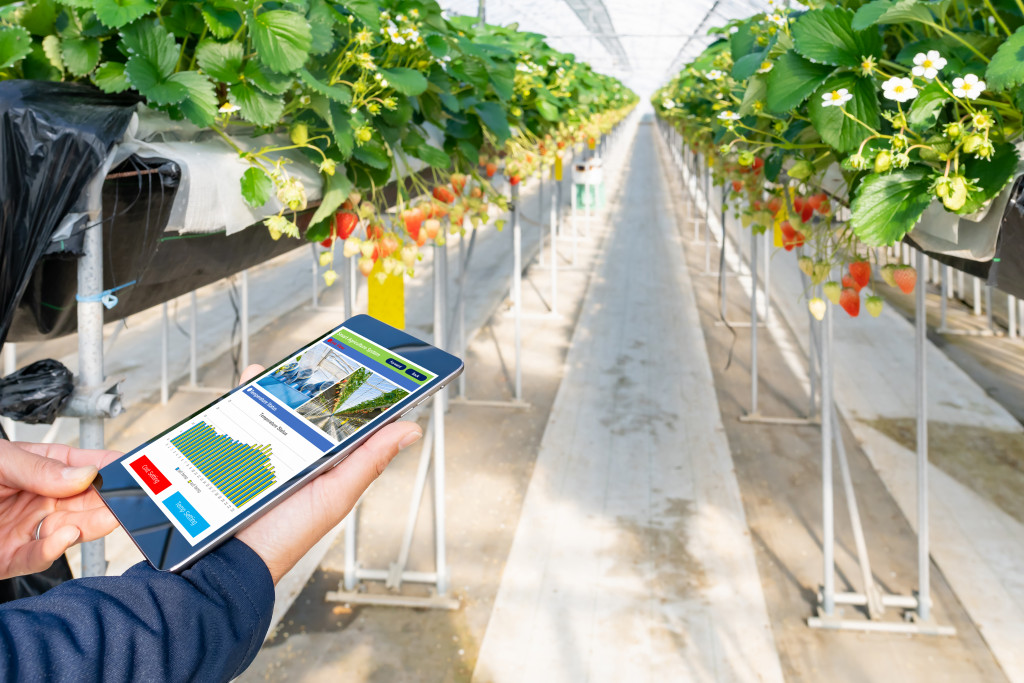In this day and age, it’s no secret that farming has become a high-tech industry. With the rise of “smart farms,” more and more farmers are switching to automated systems that help them collect data, operate machinery, and monitor their crops. This article will explore what exactly a smart farm is, how it works, and some benefits and challenges of running one.
What Is a Smart Farm
A smart farm, also known as an automated or precision farm, is a type of agricultural operation that uses technology to increase yield, decrease costs, and improve efficiency. The goal of a smart farm is to produce more food with fewer inputs while using less land and labor.
Many countries are utilizing smart farming thanks to the support of their local governments. Some countries into smart farming are Japan, South Korea, Malaysia, Thailand, and the Philippines.
How Does a Smart Farm Work
Smart farms use sensors, automation, data analysis, and other technological tools to increase efficiency and decrease costs. For example, sensors can monitor soil moisture levels, weather conditions, and crop health. Farmers can then use this information to automatically adjust irrigation systems, fertilization schedules, and pest control measures and determine when crops are ready for harvest.

Smart farmers often invest in unmanned ground vehicle (UGV) technology. UGVs are robots that can accomplish various tasks, such as crop mapping, soil sampling, and even harvesting. This technology can help reduce the need for manual labor, making farm operations more efficient.
Benefits of a Smart Farm
There are many benefits to running a smart farm, including:
Increased Yield
Smart farms now use sensors to collect data. Data analysis enables them to optimize growing conditions, helping smart farmers increase crop yields.
Decreased Costs
Automation can help reduce the amount of labor needed to run a farm, leading to cost savings. In addition, precision farming techniques can help farmers use inputs more efficiently, leading to bigger cost savings.
Improved Efficiency
Smart farms can collect and analyze data in real-time, allowing them to make adjustments quickly and efficiently. This improves both crop yield and farm efficiency.
Challenges of Running a Smart Farm
While there are many advantages to running a smart farm, there are also some challenges that farmers must be prepared to face. Knowing how to handle these challenges can help farmers operate their smart farms more effectively and achieve greater success.
High Investment Costs
The technology needed for a smart farm can be expensive. Potential adopters will need to be willing and able to invest significant resources into their operations.
Skills Shortage
Many farmers may not have the required skills and knowledge base to use modern agricultural technologies effectively. Lack of training or experience could lead to inaccurate data collection or poor decision-making, negatively impacting productivity and efficiency.
Managing Data Volume
The volume of data generated by a smart farm can be overwhelming. To make use of this data, farmers will need to invest in the infrastructure and personnel required to manage it effectively.
Connectivity and Bandwidth Issues
A smart farm relies on connectivity for data collection and analysis. This can be a challenge in rural areas where internet access is limited or unreliable.
Climate Change
Many experts believe that climate change will lead to significant shifts in agricultural conditions, potentially impacting crop yields and other key indicators of productivity. This could make it more difficult for smart farmers to achieve their goals.
Carbon Footprint
Technological inputs such as pesticides, fertilizers, and irrigation systems may contribute to a farm’s overall carbon footprint. To be more sustainable, smart farmers should look for ways to reduce this impact.
Steep Learning Curve
There is often a steep learning curve associated with adopting modern agricultural technologies. Farmers will need to be willing to invest time and effort into adapting to a new way of doing things to realize the benefits of running a smart farm.
The Future of the Smart Farm Industry
As the demand for food increases and resources become scarce, the need for efficient and sustainable agriculture grows. Smart farms are one way to meet this demand. As technology advances and becomes more affordable, more farmers will likely adopt these practices.
In the future, smart farms may become the norm rather than the exception. They promise increased yields, decreased costs, and improved efficiency, which is essential in the quest to feed a growing world population.
Overall, there are many benefits to running an innovative farm. However, there are also some challenges that farmers must be prepared to face. Despite these challenges, the future of the smart farm industry looks bright as more and more farmers recognize the potential benefits of this cutting-edge technology.
